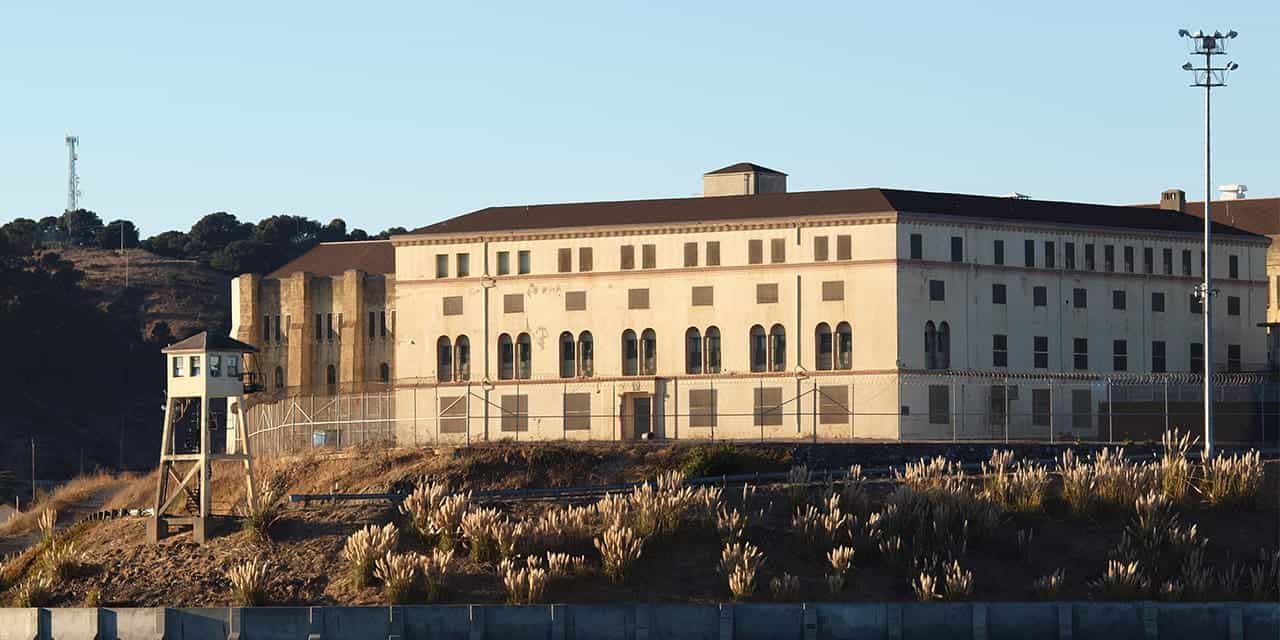California Makes 76,000 Prisoners Eligible for Earlier Release

California’s Office of Administrative Law (OAL) announced emergency regulations that make 76,000 inmates, “including violent and repeat felons,” eligible for earlier release, The Associated Press reported.
According to the new rules, “More than 63,000 inmates convicted of violent crimes will be eligible for good behavior credits that shorten their sentences by one-third instead of the one-fifth that had been in place since 2017. That includes nearly 20,000 inmates who are serving life sentences with the possibility of parole.”
Also eligible for earlier release are “more than 10,000 prisoners convicted of a second serious but nonviolent offense under the state’s ‘three strikes’ law” and “nearly 2,900 nonviolent third strikers,” according to OAL.
The new regulations took effect on Saturday, May 1, “but it will be months or years before any inmates go free earlier,” AP said. Because the rules were made under emergency authority, there was no need for a period of public comments. For the regulations to become permanent, the agency must submit them for comment next year.
OAL spokeswoman Dana Simas said, “The goal is to increase incentives for the incarcerated population to practice good behavior and follow the rules while serving their time, and participate in rehabilitative and educational programs, which will lead to safer prisons.”
“Additionally, these changes would help to reduce the prison population by allowing incarcerated persons to earn their way home sooner,” she added. But prison populations in the state have already dropped dramatically from a high in 2006.
As a result of a rights lawsuit, a panel of three judges from a U.S. District Court for Eastern and Northern California Districts ruled in 2009 that “California’s political decision-makers have failed to provide the resources and facilities required to meet the additional need for space and for other necessities of prison existence.”
The prison system had seen a 750% increase in population since the mid-1970s, and the court ruled that overcrowded prison conditions violated the “cruel and unusual punishment” clause of the Eighth Amendment to the U.S. Constitution.
In the decision Brown v. Plata, the court said, “The convergence of tough-on-crime policies and an unwillingness to expend the necessary funds to support the population growth has brought California’s prisons to the breaking point.” The ruling stated that “California’s inmate population has far exceeded the design capacity of the state’s prison system for over twenty-five years” and that in October, 2006, “the state’s adult prisons, excluding camps, were operating at 200.2% design capacity with 162,792 inmates.”
The state was given 45 days to “provide the court with a population reduction plan that will in no more than two years reduce the population of the CDCR’s [California Department of Corrections and Rehabilitation] adult institutions to 137.5% of their combined design capacity.”
In 2011, the U.S. Supreme Court upheld the court order, in a 5-4 decision authored by Justice Anthony Kennedy. In justifying its decision, the court cited information from the case that “on average, an inmate in one of California’s prisons needlessly dies every six to seven days due to constitutional deficiencies in the [California prisons’] medical delivery system” and that “in 2006, the suicide rate in California’s prisons was nearly 80% higher than the national average for prison population.”
While Simas said the changes would reduce the prison population, the Public Policy Institute of California (PPIC) says that the state’s prison population has stabilized at a much lower number than when the Supreme Court made its ruling.
“Since 2017, California’s institutional prison population has hovered at about 115,000 inmates—just below the Supreme Court mandated target of 137.5% of design capacity—the number of prisoners the system was built to house. However, 13 of the 35 state-owned facilities individually operate beyond that capacity.” PPIC said. Those 13 facilities operate at rates between 137.6% and 200% capacity.
PPIC also notes, “The most common crimes that led to imprisonment in 2017 involved assault, weapons, or robbery, all of which are serious and violent crimes. In addition, 91% of all prisoners had criminal records that included convictions for violent or serious crimes. Eighty percent of all inmates were admitted to prison after being convicted of such a crime.”
The organization says that the state’s prison population is aging, with 23% of all prisoners aged 50 or older, increasing health-care costs significantly.
The reduction in prisoners came about partly through votes from California citizens. AP said, “In 2014, voters reduced penalties for property and drug crimes. Two years later, voters approved allowing earlier parole for most inmates.” As a result, one state prison has already closed, and officials announced the closure of a second prison in April.
Photo from Eric Broder Van Dyke / Shutterstock.com
ABOUT THE AUTHOR
Jeff Johnston is a culture and policy analyst for Focus on the Family and a staff writer for the Daily Citizen. He researches, writes and teaches about topics of concern to families such as parental rights, religious freedom, LGBT issues, education and free speech. Johnston has been interviewed by CBS Sunday Morning, The New York Times, Associated Press News, The Christian Post, Rolling Stone and Vice, and is a frequent guest on radio and television outlets. He graduated Phi Beta Kappa from San Diego State University with a Bachelors in English and a Teaching Credential. He and his wife have been married 30 years and have three grown sons.
Related Posts

Federal Judge Blocks Planned Parenthood Defunding – Again
December 4, 2025



